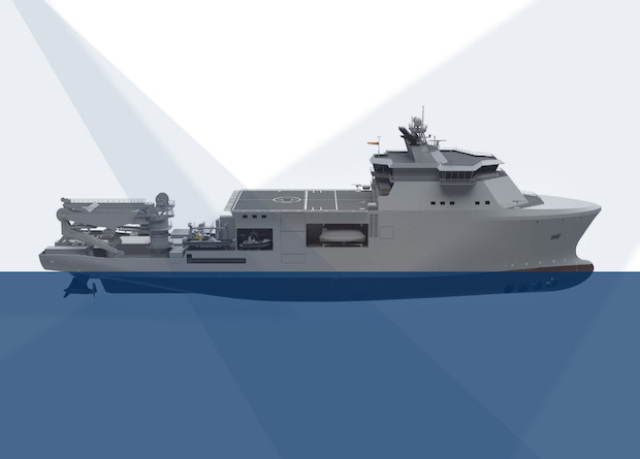The Mariotti Shipyard will build a new multi-purpose submarine rescue diving vessel for the Italian Navy. According to Naval News, its construction will begin by the end of 2022. It is planned to transfer the ship to the fleet in 2025.
In the event of an accident, submarines are sometimes unable to rise to the surface on their own and get stuck at great depth. In such a situation, the crew can not always get out, and for its rescue, submarine rescuers are required. They are equipped with special deep-sea vehicles and equipment that allow them to conduct rescue operations at great depths.
The Italian Navy now has such a vessel in service. It is called "Anteo" and has served for more than 40 years. "Anteo" can rescue submarines at a depth of up to 250 meters, reach a speed of up to 20 knots. The length of the vessel is 94.8 meters, width-15.8 meters, and displacement-9,5 thousand tons. It has a flight deck and a hangar for one medium-sized helicopter.
The Mariotti shipyard will build a new multi-purpose submarine rescue vessel of the SDO-SuRS type for the Italian military. It will begin to be built by the end of 2022, and in 2025 will be transferred to the fleet. The vessel will have to independently search for and determine the location of emergency submarines, as well as assist civil services to eliminate the consequences of natural disasters.
According to the requirements of the Italian navy, the displacement of the new lifeguard will be 8.6 thousand tons, the length-120 meters, width-22 meters, and the range of navigation-5000 nautical miles. It will sail at a maximum speed of 16 knots. The new vessel will be able to conduct rescue operations at a depth of up to 600 meters. It will accommodate up to 200 people, including 120 crew members.
Submarine rescuers can do a lot of useful work, but they need very different vessels to lift sunken ships. These are also being developed in Russia. Earlier, we wrote about the project 23570 project to create a universal vessel for lifting various objects that may threaten the marine environment.
Vasilisa Chernyavtseva

